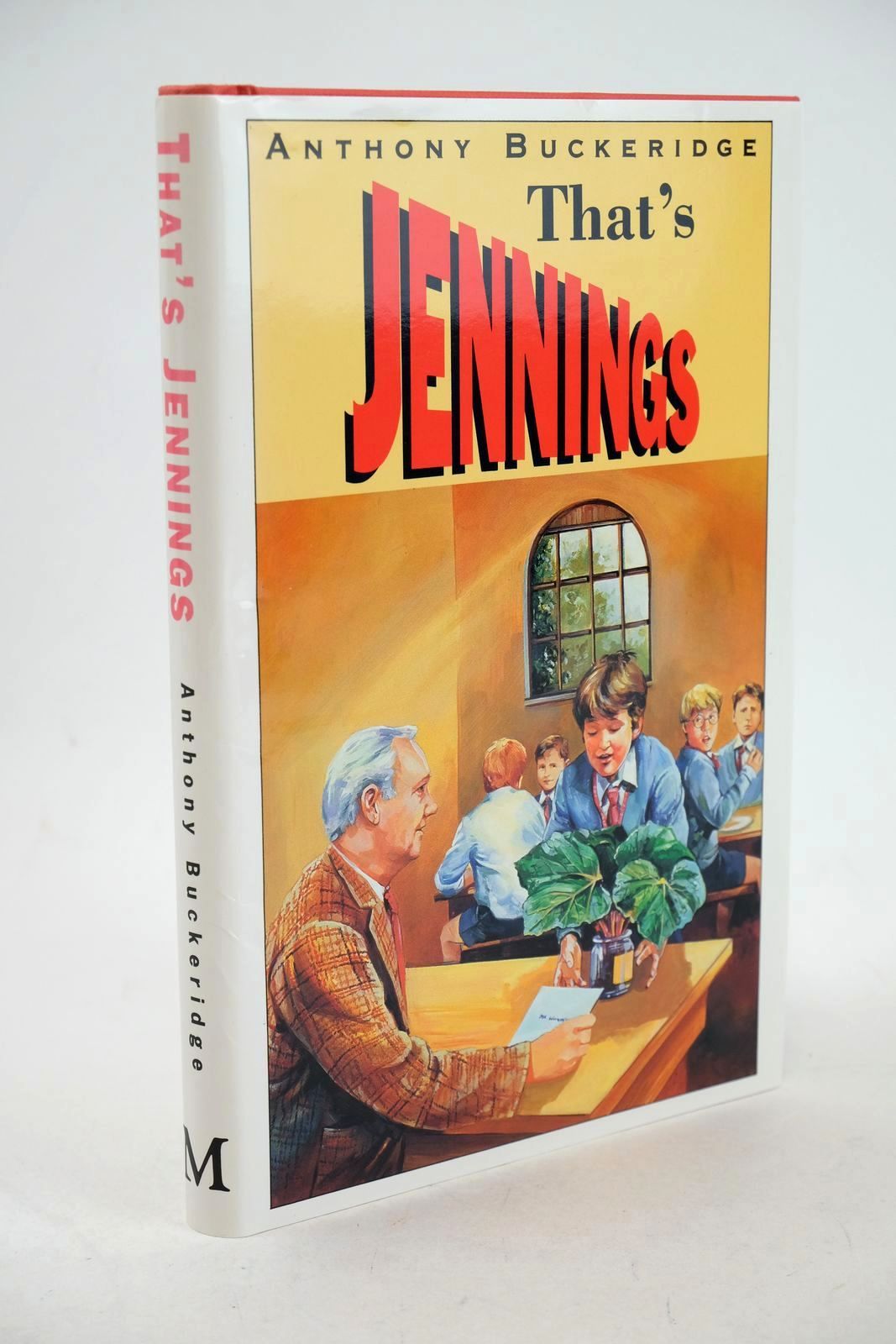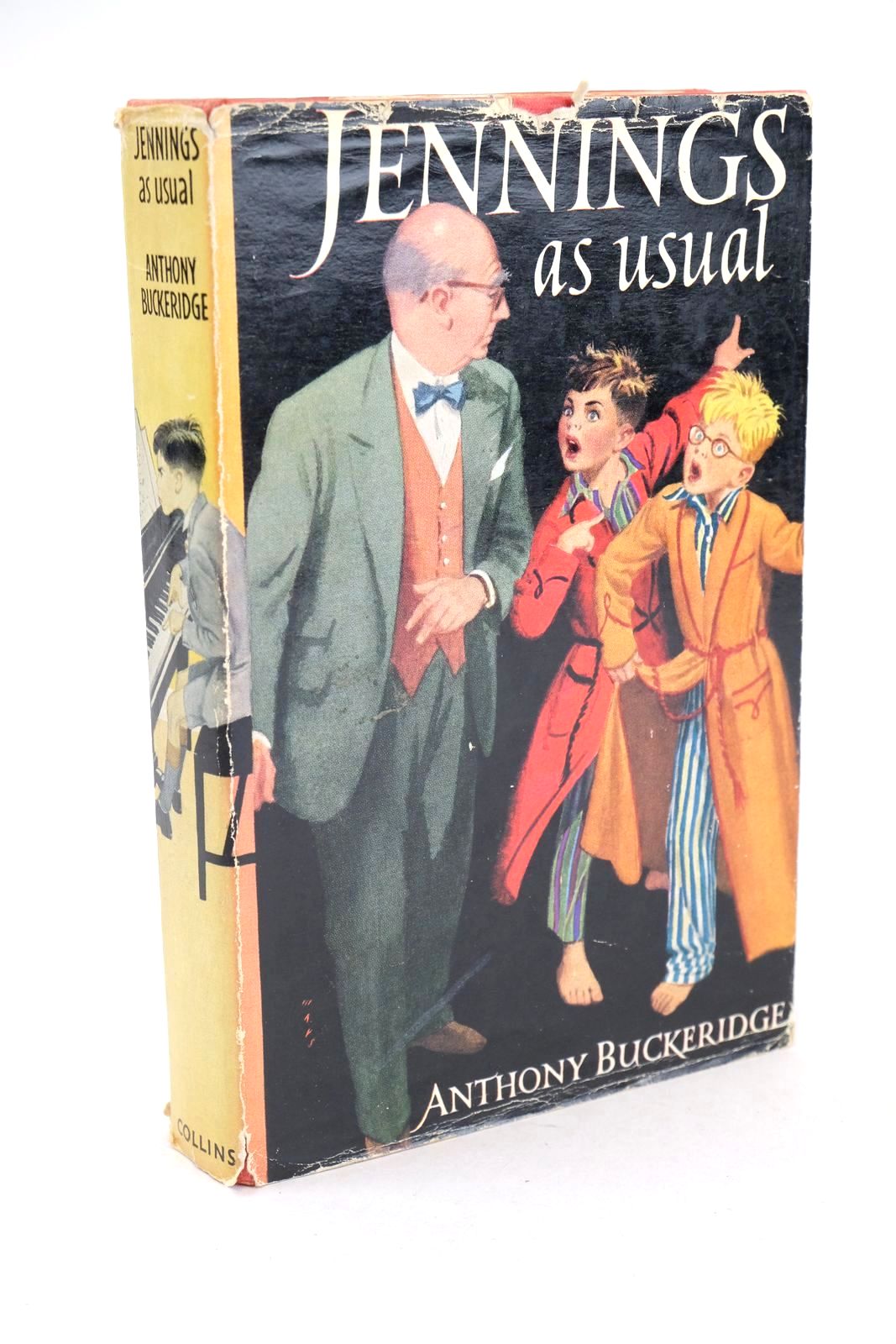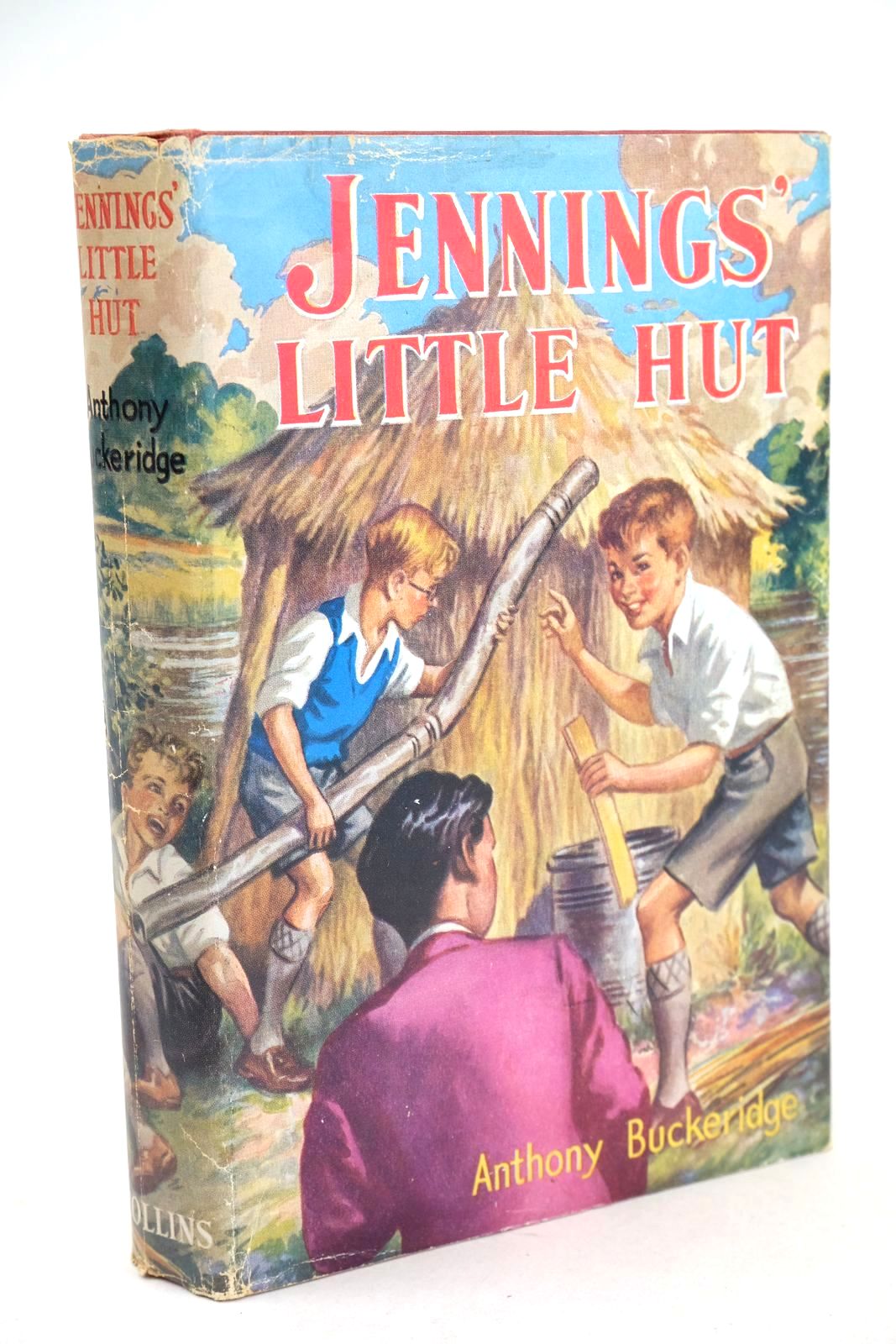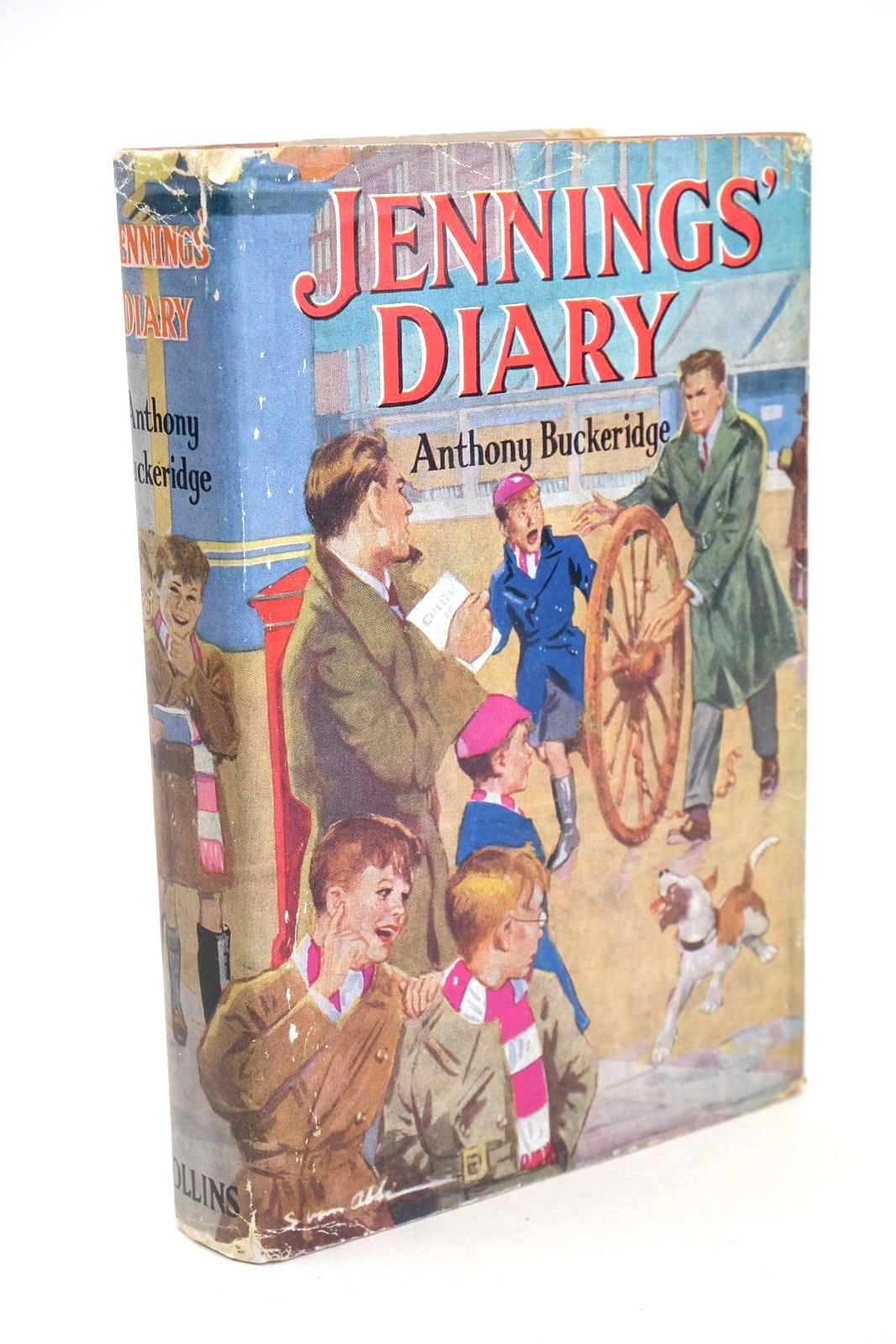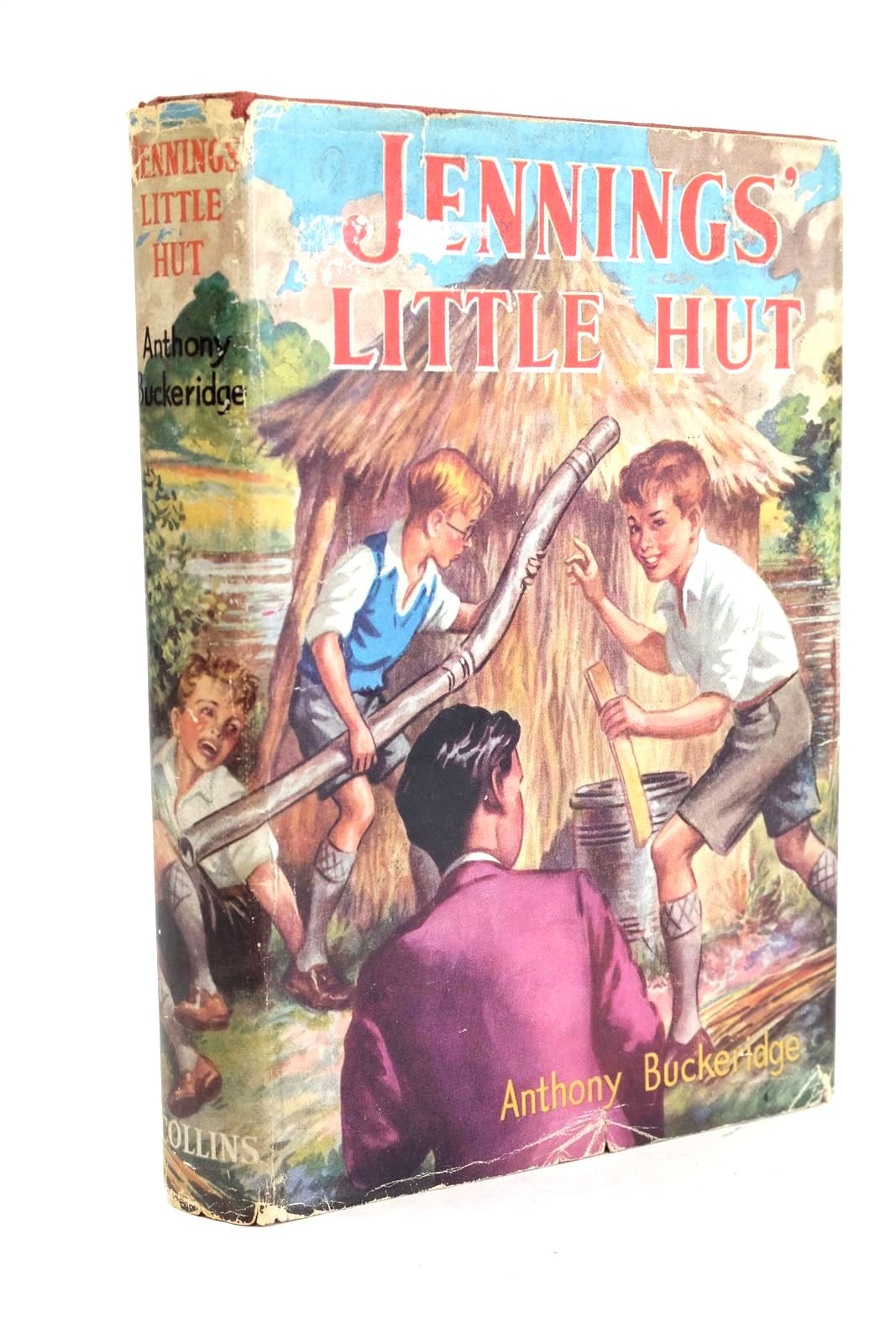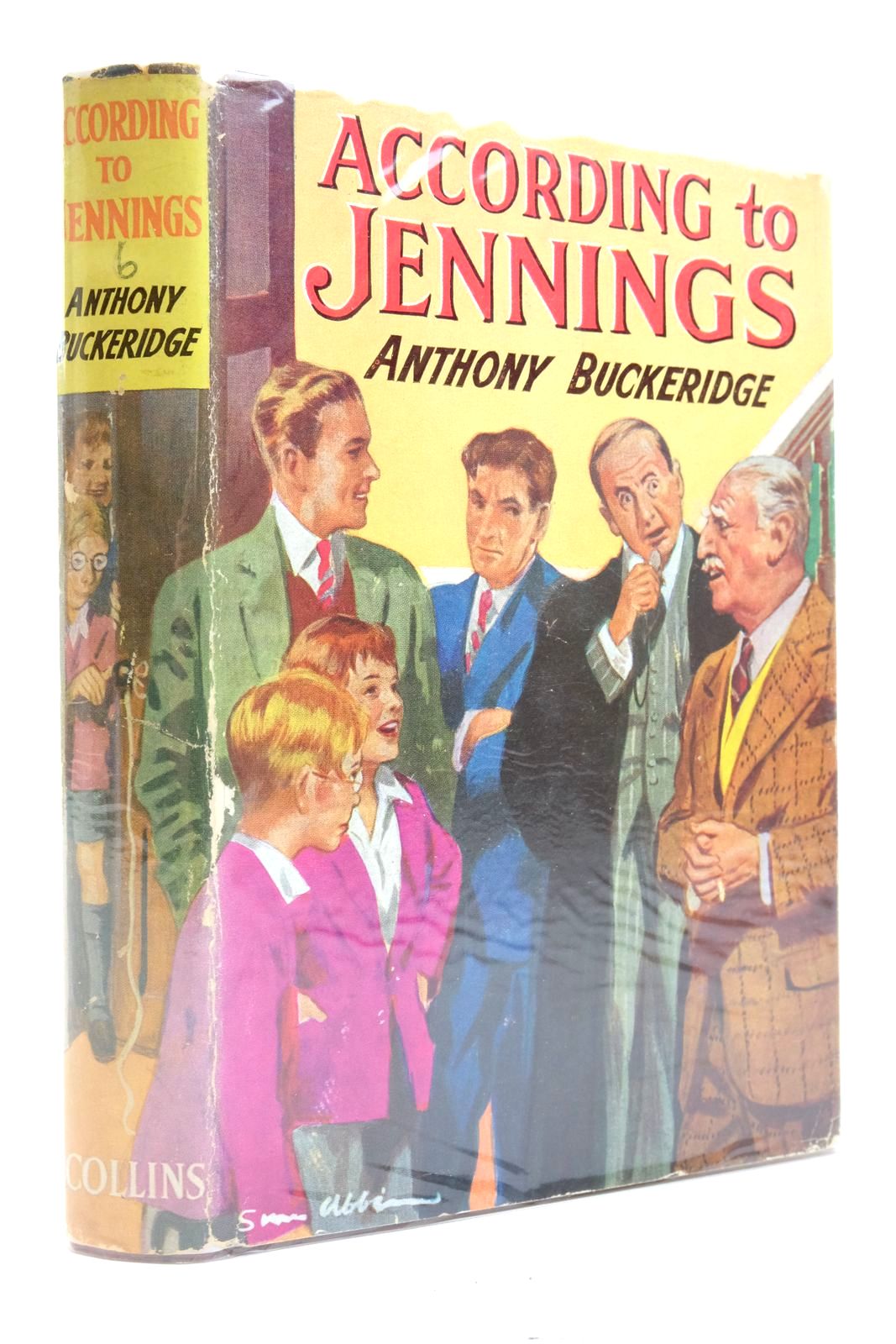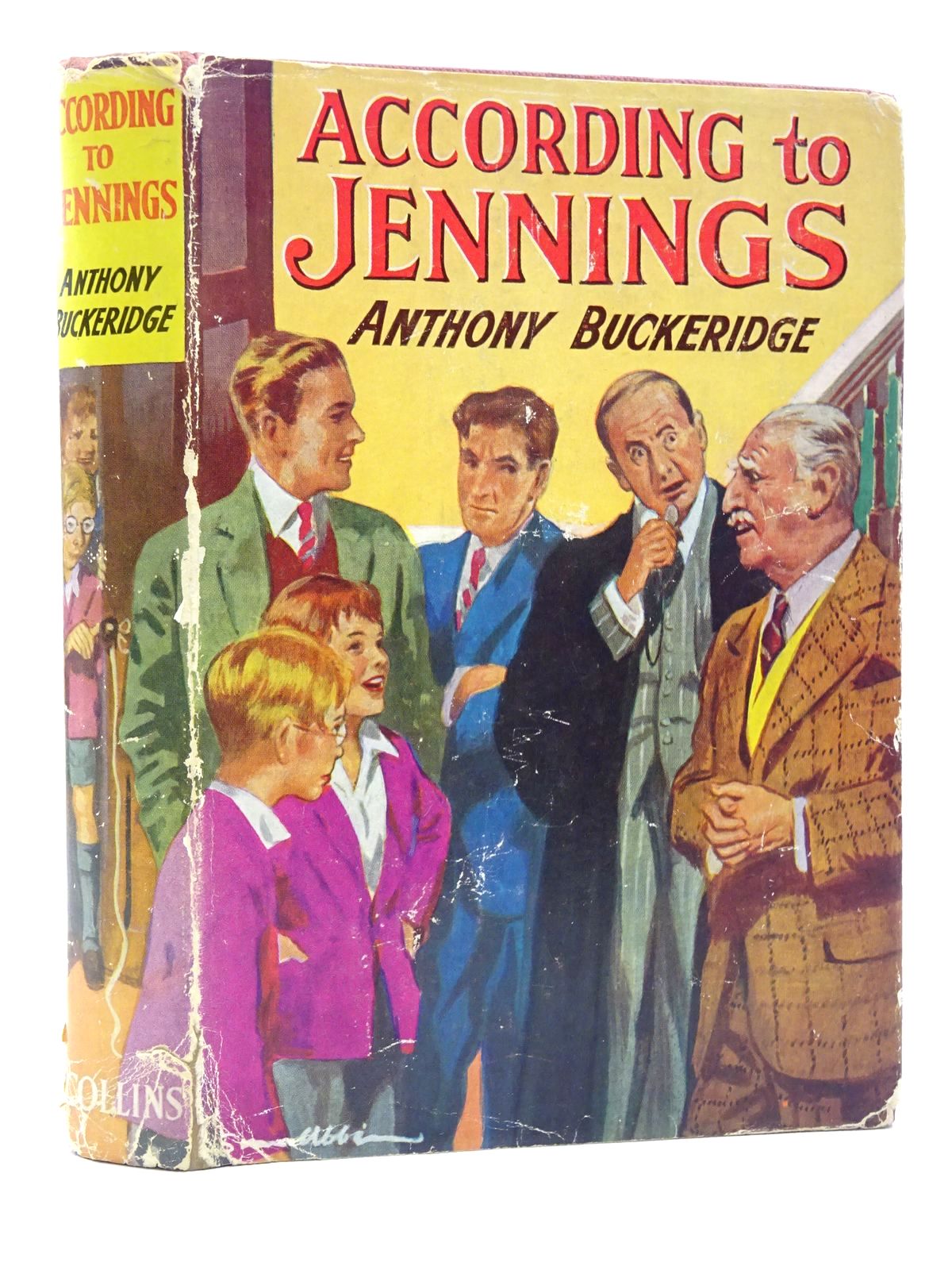jennings by anthony buckeridge
 "Don't quibble. You've made a frightful bish and you're about as much use as a radio-active suet pudding."
"Don't quibble. You've made a frightful bish and you're about as much use as a radio-active suet pudding."
It is perhaps the inventive slang vocabulary and wordplay that give the Jennings stories of Anthony Buckeridge(1912 - 2004) their enduring appeal. This example of Jennings' reproach to his long-suffering friend Darbishire helps to transport us into an almost timeless world in which the innocence (and anxieties) of childhood are captured forever.
The origins of the Jennings stories can be traced back to the author's time as a schoolmaster at St. Lawrence College in Ramsgate, Kent . As a tutor at this preparatory school, Buckeridge would encourage his young wards with offers of stories if they did as they were told. It was not long before his supply of stories was exhausted and he began to create his own, and gradually the character of Jennings emerged as the recurrent hero of each tale. Since Buckeridge maintained that authors should write about what they know, it is not surprising that the stories he created were about life at a preparatory school. His earlier teaching career in Suffolk and Northamptonshire also provided experiences on which he would draw in the Jennings books.
After the Second World War, Buckeridge submitted a script which was accepted for transmission by Children's Hour and the first Jennings radio play, Jennings Learns the Ropes , was broadcast on 16 October, 1948. It was immediately popular and a further five stories were commissioned at once. Jennings went on to top the Children's Hour polls on several occasions.
 In 1949, Buckeridge sent a batch of the radio scripts to publishers William Collins with the suggestion that they be turned into a book. The publishers agreed (not surprising with the prospect of free publicity from the popular radio series) and the first Jennings book, Jennings Goes to School , appeared in 1950. This pattern was to be repeated for subsequent Jennings books: until 1961 Buckeridge wrote the stories as radio scripts and then re-worked them into book form.
In 1949, Buckeridge sent a batch of the radio scripts to publishers William Collins with the suggestion that they be turned into a book. The publishers agreed (not surprising with the prospect of free publicity from the popular radio series) and the first Jennings book, Jennings Goes to School , appeared in 1950. This pattern was to be repeated for subsequent Jennings books: until 1961 Buckeridge wrote the stories as radio scripts and then re-worked them into book form.
Although it is possible to discern the various episodes within each book, Buckeridge's skill as an author means that the joins are almost seamless. Shortly after Jennings Goes to School , Buckeridge gave up his teaching career to concentrate on writing.
Once the Jennings books began to appear in 1950, Buckeridge added new books at a rate of almost one a year until the early 1970s. After this time Collins decided not to issue any new books, though the author would have been happy to continue writing new stories for his schoolboy hero. In reality, television had hit the market for children's fiction and Collins believed that it was not economic to issue hardback children's stories. After a few years, the publishers relented to some extent and reissued the Jennings books in paperback format under the Armada imprint. In 1977Jennings at Large was published in paperback, the only Jennings book to be first published in this format, and in 1980 it was reissued by Severn House publishers in a hardback edition which is now hard to find. There followed a long gap before Jennings Again was published in 1994, and That's Jennings in 1996 - the twenty-fourth and last of the Jennings stories.
 In a controversial move, six of the books were re-issued by John Goodchild publishers in the mid-1980s with 'some very minor emendations'. Buckeridge himself undertook the alterations as he believed that some of the schoolboy slang of the earlier books may cause confusion. For example, 'gym shoes' became 'trainers' and 'ginger pop' became 'fizzy drinks'. Although these changes were made by the author himself, many thought that the changes diminished the charm of the stories. In the late 1980s the books were again revised by the author and reprinted as paperbacks by Macmillan.
In a controversial move, six of the books were re-issued by John Goodchild publishers in the mid-1980s with 'some very minor emendations'. Buckeridge himself undertook the alterations as he believed that some of the schoolboy slang of the earlier books may cause confusion. For example, 'gym shoes' became 'trainers' and 'ginger pop' became 'fizzy drinks'. Although these changes were made by the author himself, many thought that the changes diminished the charm of the stories. In the late 1980s the books were again revised by the author and reprinted as paperbacks by Macmillan.
It is not only the texts that make the Jennings books collectable - the illustrated dustwrappers also have considerable appeal. The early books had dustwrapppers illustrated by S. van Abbe, although some considered that these drawings appeared rather dated.
However, when Douglas Mays took over the illustrations in the late 1950s the spirit of Jennings and the other inhabitants of Linbury Court Preparatory School was captured with great success. Mays continued to provide the illustrations until 1970 ( The Jennings Report ) and in 1971 the well known illustrator Val Biro provided the drawings for Typically Jennings , now one of the most collectable Jennings books.
Everybody, of course, will have their own favourite Jennings episodes - Buckeridge felt that Jennings in Particular (1968) was his favourite, although he liked the last six books as he believed that he had 'got into his stride' by that point. Inevitably, Jennings' adventures stem from his tendency to act first and think later - the staff at Linbury Court are often bemused by the 'fantastic manner' in which Jennings mind seems to work:-
"I'm extremely grateful, and I withdraw the remarks I made a few moments ago." Jennings beamed. "You mean, my head doesn't need seeing to after all, Sir?" "Well - er... " Mr. Wilkins wasn't prepared to go quite as far as that.
Similarly, Jennings escapades are frequently viewed with alarm by his constant, but cautious, companion Darbishire. As yet another of Jennings '"supersonic" ideas goes spectacularly wrong, Darbishire is wont to lament "Why do these frantic hoo-hahs always pick on us to happen to?"
As an audience, we are surely grateful that they do...
Submitted by Tim.
(Published on 30th Sep 2013 )


